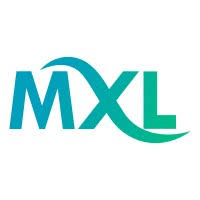
Robinjasper1109
Uploaded on Aug 19, 2025
Why Microlearning Is Key to Enhancing Workplace Productivity | MaxLearn In today’s hyper-competitive business landscape, an organization's ability to maintain and enhance productivity is paramount. It is the direct result of a workforce that is not only skilled but also efficient, agile, and equipped with the right knowledge at the right time. However, the traditional models of training—characterized by lengthy, disruptive sessions—are often counterproductive, creating a drain on valuable time and resources. This is where microlearning has emerged as a strategic and powerful solution. By its very design, microlearning is not just a method of training; it is a key driver for enhancing workplace productivity on a foundational level. The Productivity Killers of Traditional Training To understand why microlearning is so effective, we must first recognize the inherent inefficiencies of traditional training. Time Away from Work: The most obvious productivity killer is the time employees spend away from their core duties. In Finance and Banking, taking a team offline for a full-day workshop on a new regulatory update or financial product is a significant and costly disruption. It creates backlogs, delays client-facing activities, and directly impacts the bottom line. Cognitive Overload: Traditional training, with its torrent of information, often leads to cognitive overload. When employees are forced to absorb too much at once, their retention rates plummet. The knowledge is quickly forgotten, meaning the time invested in the training yields little to no long-term productivity gain. Lack of Just-in-Time Support: When a knowledge gap emerges on the job, a traditional training model offers no immediate solution. An employee must either interrupt a colleague, search a cumbersome manual, or, worse, guess—all of which are major drains on productivity. The Core Reasons Microlearning Works Microlearning directly addresses these challenges, turning a productivity sink into a powerful catalyst for performance. Efficiency and Time Savings: Microlearning's bite-sized approach respects an employee's time. A two-minute video tutorial on a new software feature is infinitely more efficient than a full-day seminar. This allows employees to learn in the "nooks and crannies" of their day—while waiting for a meeting, between tasks, or during a commute. Improved Knowledge Retention: By delivering information in small, focused bursts, microlearning aligns with the brain's natural ability to process and retain information. The best Microlearning Platforms leverage principles like spaced repetition, pushing out short, targeted quizzes or flashcards to reinforce key concepts over time. In a Health care setting, this ensures that a nurse can confidently recall a critical procedure, reducing the chance of errors and improving the quality of patient care. Just-in-Time Support: Microlearning makes knowledge on-demand. A well-designed Microlearning Application allows employees to search for and access the exact piece of information they need in seconds. For a sales associate in Retail, this means quickly pulling up a video on a product’s specific features, which can be the difference between a sale and a lost opportunity. The Technology That Unlocks the Key This powerful shift to a productivity-focused training model is powered by a strategic suite of Microlearning Software and tools. Rapid Content Creation: A key to an agile training program is the ability to create content quickly. The latest Microlearning Authoring Tools streamline this process, allowing L&D teams to build engaging, multimedia content in a fraction of the time. The most transformative tool here is the AI-powered Authoring Tool. This powerful software can take an existing product manual or a new regulatory document and, in minutes, turn it into a series of interactive Microlearning Courses. For a company in the Pharma industry, this means getting critical drug information to a global sales team in hours, not weeks, directly boosting their selling efficiency. Personalized & Timely Delivery: The right content is useless if it's not delivered to the right person at the right time. An AI-Powered Learning Platform can analyze an employee's role and past performance to recommend the most relevant Microlearning Courses, ensuring every learning minute is a productive one. The entire system is managed by a robust Microlearning LMS (Learning Management System), which provides the critical analytics needed to track learning and its impact on performance. Microlearning in Action: Industry-Specific Proof The impact of this approach is felt across a wide range of industries, delivering measurable improvements in productivity and safety. Mining & Oil and Gas: In these high-stakes industries, downtime is extremely costly. A Microlearning Platform can provide a worker with a quick visual guide on how to troubleshoot a piece of equipment, reducing idle time and preventing a costly shutdown. The on-demand nature of the training ensures that safety and procedural knowledge are always accessible, which directly impacts productivity and reduces the risk of accidents. Insurance: For an insurance agent in the field, microlearning provides a strategic advantage. Before a client meeting, they can get a quick refresher on a specific policy rider through a short, targeted Microlearning Course. This on-the-spot knowledge ensures they can provide expert advice, leading to a faster and more successful sale. By leveraging a powerful combination of Microlearning Tools and technologies, organizations are moving beyond the limitations of outdated training. They are creating a new model that is agile, intelligent, and focused on one thing: enhancing workplace productivity and driving long-term business success.

Comments